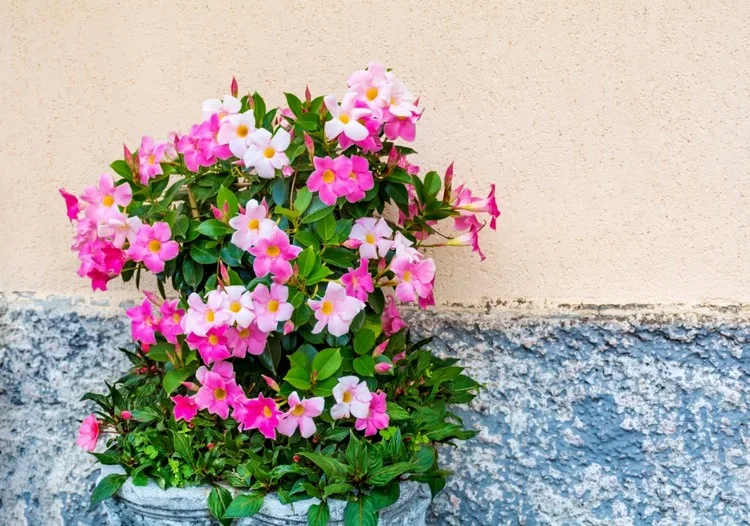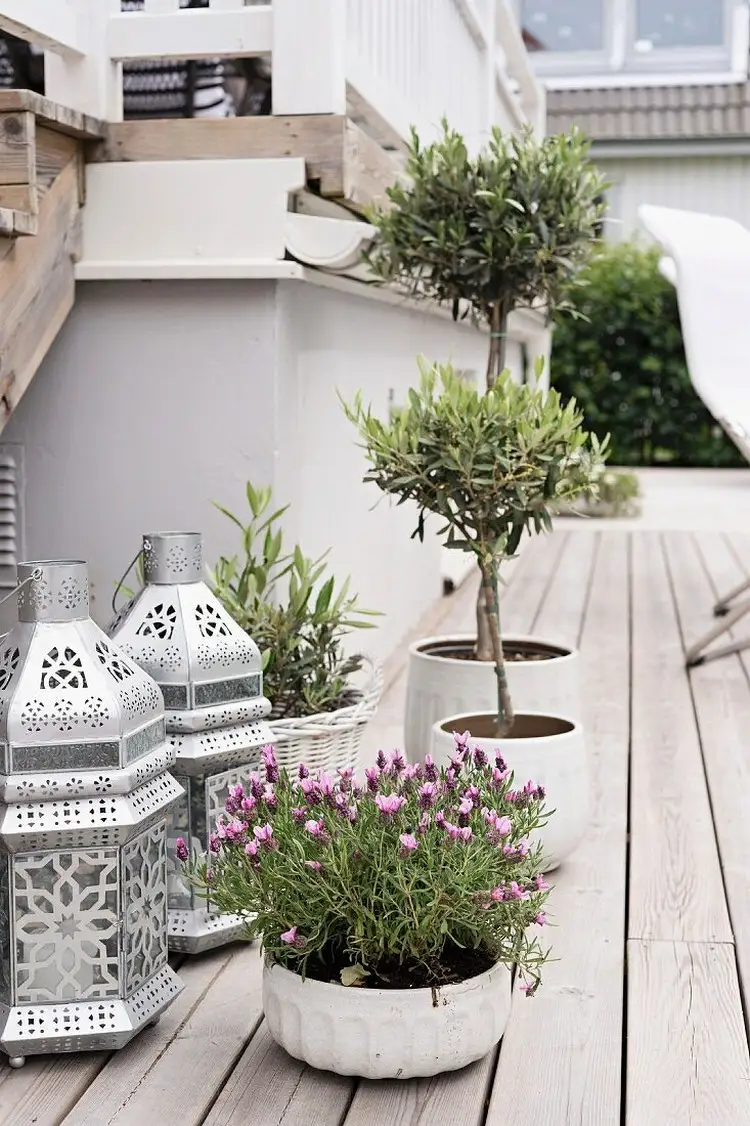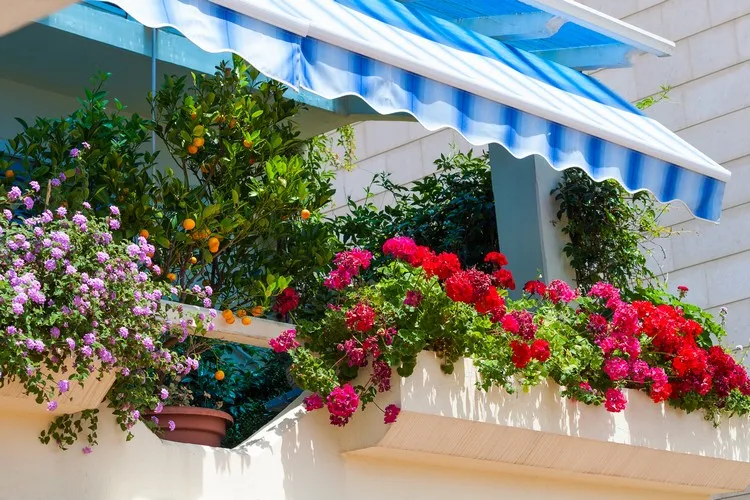Mediterranean plants give your terrace or balcony an exotic and attractive character. And if you’re worried that growing it in your home might be a challenge, you really don’t need to worry. With the right care, they also thrive as pot plants and offer you a little green oasis at home. Here are some species that will transform your outdoor space if you give them the comfort they need!
Mediterranean plants for terrace and balcony – Bougainvillea
In order for your bougainvillea to develop its typical flowers, one thing is particularly important – a location that is as sunny and warm as possible, where the plant can enjoy every ray of sunshine. Is there no such space on your terrace or balcony? Then the flowering will be very sparse or practically absent. In this case it is more advisable to buy a less demanding plant.
However, if you have the ideal space, there are still a few things you can do to ensure your bougainvillea blooms profusely:
- A big enough pot: Since the roots grow as fast as the plant, it is best to put the bougainvillea in a large enough pot from the start. The right soil is also crucial. It should have a reasonably stable structure, but it should also be permeable and, above all, contain a lot of nutrients. If you mix a good quality potting soil for Mediterranean plants with some clay, you will come very close to the requirements of the bougainvillea. Be sure to allow excess water to drain away.
Notice: Bougainvillea needs to be repotted every three years after wintering.
- Always water sufficiently: In order to create a beautiful sea of flowers on your balcony, you should water your bougainvillea regularly. If she gets too little water, her flowers and leaves will fall off after a few days. However, do not leave water in the pot.
- Right nutrition: Bougainvillea needs the right nutrients to grow vigorously. From spring to the end of summer, she will be happy if you give her a Mediterranean plant fertilizer every two weeks.
- Regular cut: If you don’t prune your bougainvillea, it will grow meter-long trunks with weak branches that only flower at the ends. So, in the fall, grab the pruning shears before the bougainvillea moves into its winter quarters. This is the ideal opportunity to shape woody plants into the desired shape.
Notice: Bougainvillea is not hardy and does not tolerate frost. To thrive, she needs plenty of light and a temperature that doesn’t drop below 10°C.

How can you design a Mediterranean garden? You can find the best tips and ideas here!
Dipladenia is one of the easiest Mediterranean pot plants to care for

Mediterranean plants for the terrace and balcony – The Dipladenia, also known as the Mandevilla, is definitely one of the easiest-to-care-for container plants. Already in May you can enjoy the beautiful flowers that will bloom until autumn.
- Licht: Your climber needs plenty of light to motivate the formation of impressive buds, but should not be exposed to direct light for more than a few hours. The Mandevilla thrives very well in partially shaded locations, provided it is warm enough there. Temperatures around 20 °C are ideal.
- planting: The Dipladenia has retained its preference for high humidity and nutrient-rich soil. With a high-quality potting soil you can offer it the ideal basis for its growth.
- fertilization: In order to flower consistently in the limited potting soil, the Mandevilla needs a weekly dose of fertilizer from March to September.
- Pour: Always make sure that the potting soil is sufficiently moist. In extreme heat, you should mainly water twice a week. After flowering, you can reduce the number of waterings.
- trimming: If the climber feels too comfortable in its place, it can start to multiply. To avoid this, she can be slightly pruned throughout the summer. The basic pruning is best done between February and March when the plant starts to grow.
- wintering: It is best to put them in a bright room with a temperature of 5-12 °C from October for the winter. The Mandevilla can even hibernate indoors at temperatures above 20°C. However, this method is not recommended for plants that are already several years old.
Dipladenia Pyramid – For more care tips and notes on the right growing conditions click here!
Olive tree is perfect for a Mediterranean balcony garden

The olive tree is ideal for your small Mediterranean garden on the balcony or terrace. It grows very slowly, so you can cultivate it in a container for a very long time. And if you follow a few tips, he can live for several decades. However, you should keep in mind that you cannot hope for a rich harvest from olive trees in pots. It may take several years before your tree produces even a few olives.
- Location: A windless spot on a south-facing balcony or terrace is ideal. It’s important to rotate the pot regularly so that all sides of the olive tree get about the same amount of sun.
- Pour: Your small olive tree needs regular watering. Especially at temperatures of 30 °C and more, plants on a south-facing balcony or terrace even have to be watered daily. It is just as important that excess water can easily drain out of the pot, because the roots do not tolerate waterlogging.
- Earth: Soil structure is also important to ensure good water management over the long term. The special potting soils for Mediterranean plants contain an increased content of sand and clay minerals that come as close as possible to their natural environment.
- fertilization: Special fertilizers for Mediterranean plants contain the right combination of nutrients to strengthen the plant. However, it is important that you follow the dosage recommendations on the packaging exactly.
- wintering: Olive tree is not hardy. For the winter, the tree needs a bright but cool room with temperatures between 0 and a maximum of 10 °C.

Other Mediterranean plants that are recommended for the balcony or terrace are: Fig Tree, Jasmine, Citrus, Pomegranate, Fuchsia, Oleander, Agapanthus and other.